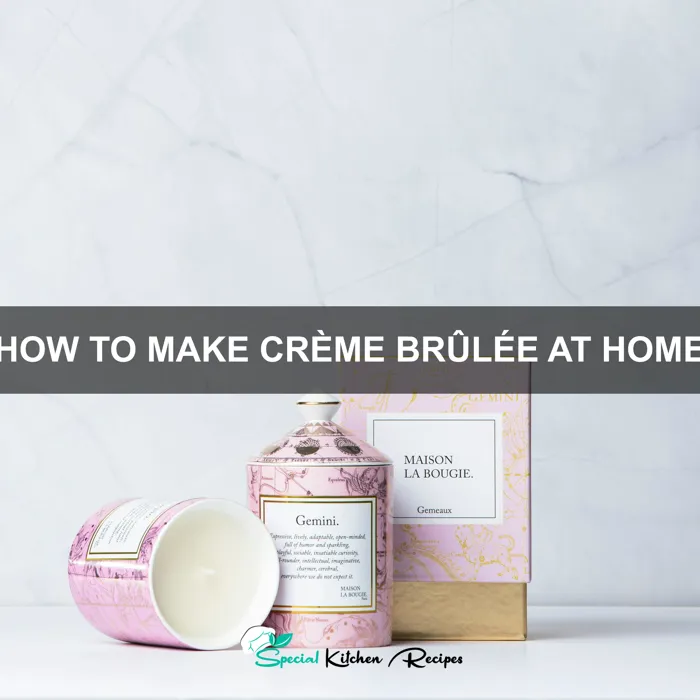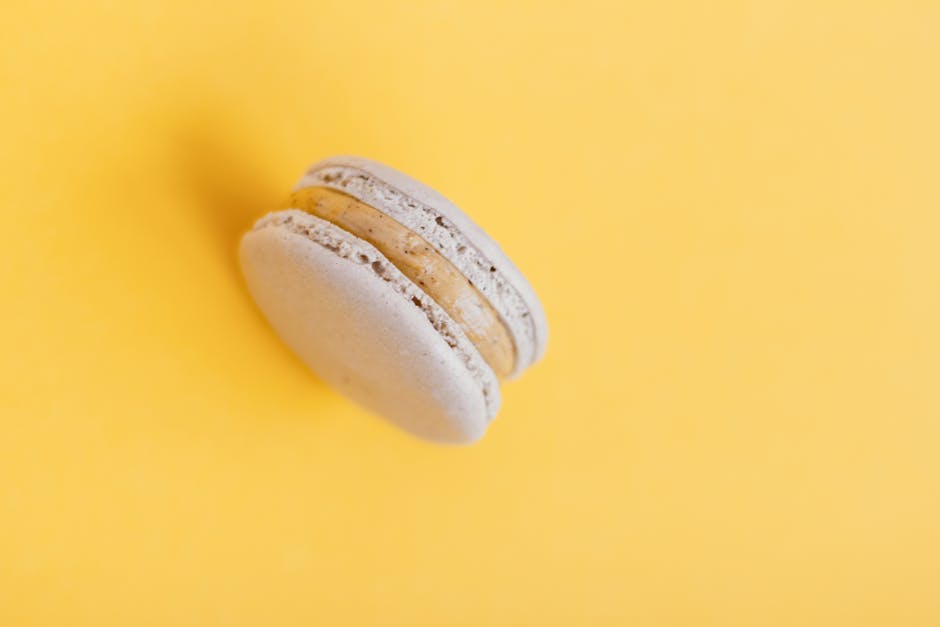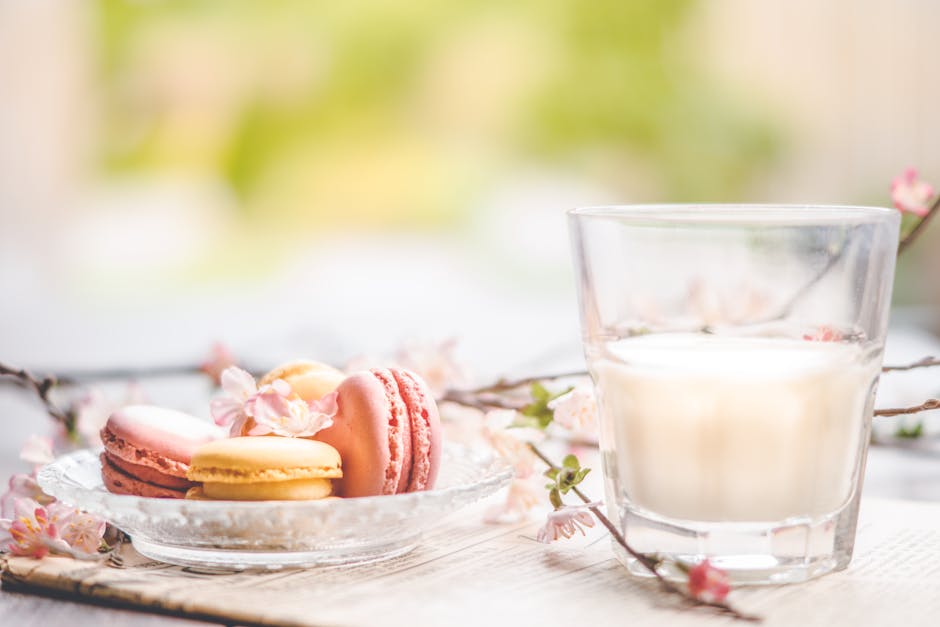Crème brûlée, with its deceptively simple elegance, is a dessert that transcends mere culinary creation; it’s a journey through time and culture. While its precise origins remain shrouded in some mystery, most food historians credit its invention to either England or France in the 17th century. Early recipes, dating back to at least 1691, appear in French cookbooks, solidifying its connection to French culinary heritage. However, the dessert’s popularity didn’t explode until the 20th century, fueled by its adoption in high-end restaurants and its inherent ability to satisfy both the palate and the eye.
The name itself, burnt cream, perfectly encapsulates its defining characteristic: the brittle, caramelized sugar crust atop a smooth, creamy custard. This contrast in textures and temperatures is what elevates crème brûlée above a simple custard. The custard base, typically made with cream, egg yolks, sugar, and vanilla, is incredibly versatile, allowing for endless flavor variations. From the classic vanilla bean to more adventurous infusions of lavender, coffee, or even saffron, the possibilities are limited only by one’s imagination. The process of creating the signature caramelized sugar crust involves carefully applying a layer of granulated sugar to the surface and then using a kitchen torch to create that iconic crackling texture.
Crème brûlée’s cultural significance is undeniable. It’s frequently featured on restaurant menus worldwide, consistently ranking among the most popular dessert choices. Statistics show that crème brûlée is consistently ordered in high volumes at upscale dining establishments, often exceeding the popularity of other classic desserts. Its presence in countless films and television shows further reinforces its status as a culinary icon. Beyond its commercial appeal, crème brûlée embodies a sense of refined indulgence, a moment of quiet pleasure often associated with celebrations and special occasions. This seemingly simple dessert, with its rich history and captivating presentation, continues to captivate food lovers across the globe.
Ingredients and Measurements
Creating the perfect Crème Brûlée hinges on precise measurements and high-quality ingredients. Don’t skimp on the good stuff; the richness of the custard is paramount. This recipe yields approximately six servings.
Heavy Cream: 2 cups (475ml). Using heavy cream (also known as double cream) with a high fat content (at least 36%) is crucial for achieving the desired creamy texture and rich flavor. Lighter creams will result in a less decadent and potentially grainy final product. Ensure your cream is cold before starting.
Whole Milk: ½ cup (120ml). Adding whole milk helps to temper the richness of the heavy cream, resulting in a smoother, less overwhelmingly rich custard. Skim milk or other alternatives will significantly alter the final texture and taste.
Granulated Sugar: ¾ cup (150g), divided. This sugar is used in two crucial stages: one for the custard base, and another for the caramelized sugar topping. Use a fine granulated sugar for even caramelization. Coarse sugar may burn unevenly.
Egg Yolks: 6 large. Use large, fresh egg yolks for the best binding and richness. Older yolks may be less effective in creating a smooth and stable custard. Separate the yolks carefully, ensuring no egg white contaminates them, as this can lead to a grainy texture.
Vanilla Extract: 2 teaspoons. High-quality vanilla extract is a must. Pure vanilla extract offers a superior flavor compared to imitation extracts. Adjust the amount according to your preference, but be mindful not to overpower the delicate custard flavor.
Salt: Pinch. A pinch of salt enhances the sweetness and overall flavor profile of the custard. Don’t be afraid to add it; it complements the other ingredients without being noticeable directly.
Optional: For an extra touch of elegance, consider adding a teaspoon of Grand Marnier or other orange liqueur to the custard base. This will add a subtle citrusy note to your Crème Brûlée.
For the Caramelization: You’ll need a kitchen torch for this step. If you don’t have one, a broiler will work, but requires careful monitoring to avoid burning the sugar.
Equipment Checklist
Making perfect crème brûlée requires the right tools. This checklist ensures you have everything you need for a smooth and successful process, from initial preparation to the final torching. Don’t skip any items – each plays a vital role in achieving that signature creamy texture and crisp caramelized sugar topping.
1. Ramikins or Oven-Safe Dishes: You’ll need six to eight individual ramekins, approximately 6-ounce capacity. These should be oven-safe and ideally made of ceramic or porcelain for even heat distribution. Avoid using metallic ramekins as they can heat unevenly, potentially leading to over-cooking or uneven setting of the custard. Choose ramekins with a slightly rounded base for aesthetic appeal.
2. Saucepan (Medium-Sized): A medium-sized saucepan (approximately 2-quart capacity) is crucial for gently heating the cream and sugar mixture. Avoid using a non-stick saucepan for this, as the non-stick coating can be damaged by high heat. Opt for a heavy-bottomed saucepan for even heat distribution and to prevent scorching.
3. Whisk: A sturdy whisk is essential for thoroughly combining the egg yolks, sugar, and cream mixture. A balloon whisk is ideal for its efficient incorporation of air and creating a smooth custard base. Ensure your whisk is clean and free of any residue to prevent contamination.
4. Measuring Cups and Spoons: Precise measurements are key to successful crème brûlée. Invest in accurate measuring cups and spoons for precise ingredient proportions. Using a kitchen scale for measuring ingredients like sugar and eggs will ensure even greater accuracy.
5. Large Bowl: A large bowl is needed for whisking the egg yolks and sugar before incorporating the heated cream. Choose a bowl that’s sufficiently large to allow for ample whisking without splashing.
6. Fine-Mesh Sieve: Sieving the custard mixture after combining all ingredients removes any lumps or unmixed egg yolks, ensuring a perfectly smooth and luxurious texture. This step is crucial for a professional-looking and tasting crème brûlée.
7. Baking Dish (9×13 inch): A larger baking dish is needed for the water bath. This will help to prevent cracking and ensure even cooking of the custards. Fill the baking dish with enough hot water to come halfway up the sides of the ramekins.
8. Kitchen Torch: A kitchen torch is essential for creating the signature caramelized sugar crust. Choose a reliable butane torch that provides a consistent and controllable flame. Practice using the torch before applying it to the crème brûlée to avoid burning the sugar.
9. Sugar (Granulated): You’ll need granulated white sugar for both the custard and the caramelized topping. Approximately 1/4 cup of sugar per ramekin is usually sufficient for the topping.
10. Oven Mitts and Oven: For safe handling of hot ramekins and baking. Always use oven mitts when handling hot dishes.
Custard Preparation (including tempering)
The heart of a perfect Crème Brûlée lies in its smooth, creamy custard. This section details the crucial process of making this custard, emphasizing the critical tempering step to prevent your eggs from scrambling.
Ingredients for the Custard:
- 2 cups (475ml) heavy cream
- 1 cup (200ml) whole milk
- ¾ cup (150g) granulated sugar
- 1 vanilla bean, split and seeds scraped (or 2 teaspoons vanilla extract)
- 6 large egg yolks
Instructions:
Begin by combining the heavy cream, milk, and sugar in a medium-sized saucepan. If using a vanilla bean, add the scraped seeds and the pod itself to the saucepan. If using extract, reserve it for later. Heat this mixture over medium heat, stirring occasionally, until it just begins to simmer. Do not boil. The goal is to gently heat the cream and milk to infuse the flavors and dissolve the sugar completely. Remove from heat and let it steep for at least 15 minutes to allow the vanilla to infuse fully. Remove the vanilla bean pod (if used).
Tempering the Egg Yolks: This is a crucial step to prevent your custard from curdling. In a separate bowl, whisk the egg yolks until they are light and slightly frothy. Slowly drizzle about one-third of the warm cream mixture into the egg yolks, whisking constantly. This gradually raises the temperature of the yolks, preventing them from shocking and scrambling when added to the hotter cream. Once you’ve incorporated the first third, gradually add the remaining cream mixture, whisking continuously until the mixture is smooth and uniform. If using vanilla extract, add it now.
Strain (Optional but Recommended): For an exceptionally smooth custard, strain the mixture through a fine-mesh sieve into a clean bowl. This removes any potential lumps or bits of vanilla bean that might have escaped.
Filling the Ramekins: Carefully pour the custard into your prepared ramekins, filling each about ¾ full. This leaves room for expansion during baking.
Baking: Refer to the baking instructions in the next section. Remember that over-baking will result in a dry, rubbery custard. Under-baking will leave it wobbly and under-set.
Professional Tip: For an even richer custard, use a combination of heavy cream and crème fraîche. The crème fraîche adds a tangy depth that complements the sweetness beautifully.
Baking Process (including water bath)
The baking process for crème brûlée is crucial for achieving the perfect creamy texture and custard consistency. A water bath, also known as a bain-marie, is essential for gentle, even cooking and prevents cracking. This method ensures the custard cooks slowly and avoids scorching.
First, preheat your oven to 325°F (160°C). This temperature is important; too high, and the custard will curdle; too low, and it won’t set properly. Accurate oven temperature is key. Consider using an oven thermometer for precise readings.
Next, prepare your water bath. Find a roasting pan or baking dish large enough to hold your ramekins comfortably. Fill the pan with enough hot water to come about halfway up the sides of the ramekins. Do not fill the pan completely, as this can cause the water to boil over during baking.
Carefully place your filled ramekins into the prepared roasting pan. The water should cradle the ramekins, providing even heat distribution. Ensure the water level is consistent around each ramekin. Any unevenness may lead to uneven cooking.
Now, carefully transfer the roasting pan to the preheated oven. Bake for approximately 45-55 minutes, or until the custards are just set around the edges but still slightly jiggly in the center. Overbaking will result in a dry, rubbery texture. A slight jiggle is desirable.
Once baked, carefully remove the roasting pan from the oven. Use oven mitts to protect your hands from the hot water and pan. Allow the ramekins to cool slightly in the water bath for about 15 minutes before removing them individually. This gradual cooling helps prevent cracking.
Finally, transfer the ramekins to a wire rack to cool completely. Refrigerate the custards for at least 4 hours, or preferably overnight, to allow them to fully set and chill. This chilling step is crucial for achieving the desired creamy texture and enhances the flavor.
Important Note: Baking times may vary depending on your oven and the size of your ramekins. Start checking for doneness around 45 minutes. A gentle shake should reveal a slightly jiggly center. If the custard is still too liquid, bake for another 5-10 minutes and check again.
Following these steps carefully will ensure you achieve perfectly smooth, creamy, and delicious crème brûlée every time.
Caramelization (Including Torch Safety)
The final, crucial step in creating a perfect crème brûlée is the caramelization of the sugar topping. This creates the iconic crisp, brittle layer that contrasts beautifully with the creamy custard below. We’ll be using a kitchen torch for this process, which offers precise control and a beautiful, even caramelization. However, safety is paramount when using a torch.
Before you begin, gather your materials: a kitchen torch (butane refillable is recommended), a lighter (to ignite the torch), and your prepared crème brûlée ramekins. Ensure your ramekins are cool to the touch before proceeding. Never attempt to caramelize sugar while the ramekins are hot from the oven; this can lead to uneven caramelization and potential burns.
For each ramekin, you’ll need approximately 1-2 teaspoons of granulated white sugar. Avoid using brown sugar, as it won’t caramelize as evenly and will result in a less appealing color. Sprinkle the sugar evenly over the surface of the chilled crème brûlée, ensuring a thin, consistent layer. Avoid piling the sugar in any one area, as this will lead to uneven browning and potentially burned spots.
Now, for the caramelization. Hold the kitchen torch approximately 4-6 inches above the surface of the sugar. Maintain a consistent distance to avoid burning the sugar. Slowly move the flame back and forth over the sugar, focusing on areas that aren’t caramelizing evenly. The sugar should begin to melt and turn a light amber color. Continue moving the torch and avoid lingering too long in any one spot to prevent burning.
The ideal caramelization is a rich, amber color, with a slight shimmer. If the sugar becomes too dark and starts to smoke, you’ve over-caramelized it. If this happens, do not panic; simply let it cool, then carefully scrape off the burned sugar and repeat the process with a fresh layer.
Once the sugar is caramelized to your liking, immediately set the ramekin down. The caramelized sugar will harden quickly, so speed is key. Allow the caramelized sugar to cool completely before serving. Always remember to turn off the kitchen torch immediately after use and allow it to cool completely before storing it. Never leave a lit torch unattended. Proper torch safety is essential to prevent accidents and injuries.
With a little practice, you’ll master the art of crème brûlée caramelization and impress your guests with a beautifully crafted dessert every time.
Cooling and Chilling: The Key to Creamy Perfection
The cooling and chilling process is arguably the most crucial step in making a flawless crème brûlée. Rushing this stage will result in a less-than-perfect texture, so patience is key. After removing your ramekins from the bain-marie (water bath), allow them to cool completely at room temperature. This gradual cooling prevents thermal shock that can cause cracking in the custard.
Avoid placing the hot ramekins directly into the refrigerator. This rapid temperature change can lead to cracks in the delicate custard and a less smooth, creamy texture. Let them sit undisturbed on a heat-resistant surface for at least 1 hour, or until they reach room temperature. You’ll notice the custard beginning to set as it cools.
Once at room temperature, carefully cover each ramekin with plastic wrap. Press the plastic wrap directly onto the surface of the custard to prevent a skin from forming. This is essential for maintaining a smooth, creamy texture. Refrigerate the ramekins for at least 4 hours, or preferably overnight. This extended chilling time allows the custard to fully set and develop its characteristic creamy consistency.
The longer you chill the crème brûlée, the firmer the custard will become. While 4 hours is the minimum, chilling for 6-8 hours or even overnight will result in a more stable and easier-to-handle dessert. However, don’t chill for excessively long periods, as this might affect the flavor slightly.
Before serving, check the consistency of the custard. It should be firm but still slightly jiggly in the center. If it’s too firm, it may indicate over-chilling. If it’s still too soft, allow it to chill for a little longer. Remember, patience is your best ally in this process. A perfectly chilled crème brûlée is a testament to your dedication to detail.
Once sufficiently chilled, you are ready to move on to the final, exciting step: caramelizing the sugar topping! This will add that signature crunchy contrast to the smooth, creamy custard.
Recommendations
For the best Crème Brûlée experience, ensure your custard is cooked properly to achieve a smooth, creamy texture. Undercooked custard will be wobbly and runny, while overcooked custard will be grainy and separated. A gentle simmer is key; avoid boiling the custard as this can lead to curdling.
Proper chilling is crucial for setting the custard. Allow at least 4 hours, and preferably overnight, in the refrigerator before brûléeing. This ensures a firm, creamy base for the caramelized sugar.
When brûléeing, use a kitchen torch and work in short bursts, keeping the torch moving constantly to prevent burning. The sugar should be a deep amber color, not black. If you don’t have a kitchen torch, you can use a broiler, but be very careful to watch closely to avoid burning.
Serving suggestions: Crème Brûlée is best served chilled. Garnish with a sprinkle of extra sugar, a fresh berry, or a sprig of mint. Consider serving it in small, elegant ramekins for a sophisticated presentation.
Storage: Store leftover Crème Brûlée in an airtight container in the refrigerator for up to 3 days. The caramelized sugar may soften slightly, but the custard will remain delicious. Do not refreeze.
Complementary Dishes: Crème Brûlée pairs beautifully with fresh fruit tarts, a light salad with a citrus vinaigrette, or a rich dark chocolate cake. Its creamy sweetness also complements the bitterness of strong coffee or espresso.
Nutritional Information (per serving, approximate): Calories: Approximately 250-300 (depending on cream and sugar used). Fat: High. Protein: Moderate. Carbohydrates: Moderate. Note: The exact nutritional information will vary depending on the specific ingredients and quantities used. This is a rich dessert and should be enjoyed in moderation.
Enjoy! Your homemade Crème Brûlée is a delicious treat that will impress your friends and family. Remember to experiment with different flavors – you can add extracts like vanilla or almond to customize the taste.





